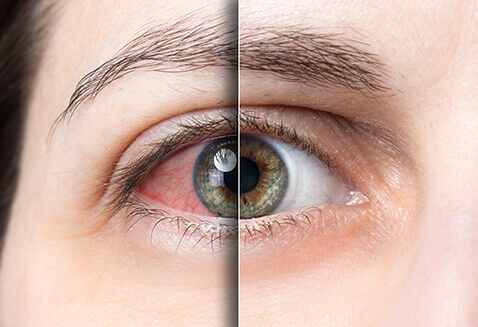
Treatments for dry eye include eyedrops called artificial tears to lubricate the eyes and help maintain moisture. Your ophthalmologist may conserve your tears by closing the channels through which your tears drain. You can also try to prevent tears from evaporating by avoiding wind and dry air from overheated rooms and hair dryers. Smoking irritates dry eyes and should be avoided.
LipiFlow® is a therapy consisting of the application of localized heat and pressure to the eyelids in patients with Meibomian Gland Dysfunction (MGD), also known as evaporative dry eye or lipid deficient dry eye.
Unlike traditional treatments (e.g., warm compresses, wetting drops and ointments) that address dry eye symptoms, LipiFlow® treats the root cause, the obstructed Meibomian glands. If left untreated, dry eye can lead to further ocular deterioration and additional problems. The goal of unblocking the glands is to allow them to resume their natural production of lipids required for a healthy tear film. LipiFlow® treatments can only be provided by a licensed physician.
OptiLight is a light-based, fast, 15-minute non-invasive treatment performed on the area below the eyes. OptiLight uses precise pulses of light to reduce the inflammation typically associated with dry eye disease.
In a controlled clinical trial, a majority of patients treated with LipiFlow® reported an improvement in overall dry eye symptoms at 4 weeks post-treatment.
You would not be a candidate for LipiFlow® if you recently had eye surgery, eye injury, herpes of the eye or chronic eye inflammation. LipiFlow may not fit all eyes. Possible side effects from LipiFlow® include redness, burning, stinging, discharge, blurred vision, dryness and sensitivity to light. If dry eye is hindering you from the activities you love, we are here to help. Please contact us to schedule an appointment for a dry eye assessment.